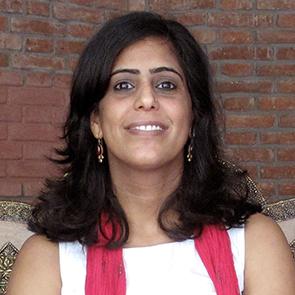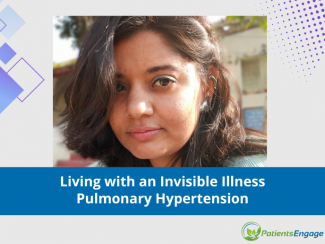
"Early stage diagnosis and Screening affect survival rates in top 3 cancers" Preet K. Dhillon, PhD, MPH, Epidemiologist, Senior Scientific Officer, Public Health Foundation of India in her interview with PatientsEngage
Which cancers are easy to detect at an early stage ? What is their contribution to the total number of cancer malignancies? At what rate is this growing?
Of the most commonly occurring cancers in India, breast, cervix, oral and colorectal cancers are amenable to early detection through non-invasive, low-cost methods. The top 3 cancers in India are breast, cervix and oral (in that order) and account for 35% of newly diagnosed cancer in India each year. While breast cancer rates are growing, cervical cancer rates are declining and oral cancer rates are changing, based on age and gender-specific use of tobacco in different parts of the country.
Why is early detection important?
The most important predictor of survival in cancer patients is their stage at diagnosis, so early detection is a critical factor in how people with cancer will fare in the long run. In low-resource settings such as India, prevention and early detection are more important because the financial, physical and emotional costs associated with late stage-at-diagnosis is especially crippling.
What are the basic hurdles of implementation of cancer screening?
The basic hurdles for successful implementation of cancer screening are numerous and include:
- Cost, availability and acceptability (e.g., not too invasive) of a screening test;
- The human, health system and technical infrastructure required to carry out the test;
- Acceptable measures of the test’s sensitivity and specificity (not too many false positives & false negatives);
- Adequate follow-up of positive tests to diagnosis; and
- Completion of treatment that improves survival after diagnosis.
What is "cancer literacy"? Has social media been used to help the Cancer Campaign?
Cancer literacy can refer to the awareness of signs and symptoms of cancer, as well as risk factors (including those we can and cannot change), methods of early detection (e.g., screening) and management of the disease, to enable better decision-making. Social media should be used more in the campaign to address stigma and awareness, especially to battle the myths (e.g., deodorant causes cancer) that seem to spread faster than truths in social media.
What are the new ideas that are being discussed for spreading awareness and debunking taboos about Breast Cancer?
Social media is one idea, and another is inspiring the youth as the agents of change. We have tried reaching out to younger audiences (e.g., Miranda House, Delhi University), not only to educate them, but to create more awareness about health and behavioural change in the older members in their families. Engaging the media in positive stories of survivors is another powerful way to address awareness, taboos and stigma in our society. Survivors offer a powerful, positive voice as well.
Why is the Government not able to follow through with any single model of early detection?
We all know that health is a state subject in India, so implementation depends on the state-level commitment and health system, which varies and therefore, so will models of early detection. Like with other health outcomes, early detection of cancer can be more successful where there is political commitment, affordable and accessible detection, diagnostics and treatment together with a health system that enables linkages to diagnosis and care.
How can we overcome these hurdles as a nation?
Universal coverage of low-cost, non-invasive methods can be provided to improve access and cost. Mobile technologies can enable better linkages to care and treatment compliance. The addition of accredited social health workers for NCD’s can be considered in the NHM to focus on screening and routine management of NCD’s.
Do you think there is a lack of leadership in the Cancer Campaign in India?
There are well-respected leaders in India’s top cancer institutes, the specialties of oncology and/or in certain regions of the country, but invoking cost-effective, nationwide change across diverse state health systems for early detection of cancer has proven to be difficult.
Why has the government not been able to establish more cancer institutions in the country?
The Government of the India has announced a new initiative to fund 20 new state cancer institutes and 50 tertiary care centres.
How can cancer care be made more affordable?
- Universal health coverage, for bringing outpatient care, pharmaceuticals and diagnostics under the ambit of health insurance schemes, especially for the poor who are at risk of ‘catastrophic health spending’.
- Advocacy for more treatments to be eligible on the list of essential medicines.
- Task shifting and task sharing ( AYUSH doctors in rural areas) of palliative care and pain management in primary care services.
What role can telemedicine play in linking early detection with diagnosis? Is it a feasible option for India?
Telemedicine offers the opportunity to bridge the gaps in available specialists and technical/laboratory infrastructure between rural areas and urban cities. If telemedicine can be used for the interpretation of screening tests and/or pathology reports, it can provide a linkage between early detection and diagnosis.
Has early detection increased in the past 10 years? How has this affected mortality rates?
Early detection has improved in some areas of the country where the level of education and awareness, and state commitment towards access and coverage, has improved over time. As a result, there are improvements in stage at diagnosis and cancer survival in areas like Chandigarh and as far as breast cancer is concerned.
What has been the progress of actions since the 'CANCER PREVENTION IN INDIA: Catalyzing Action and Enhancing Implementation' Symposium in Delhi 2015'?
One immediate step was providing feedback to the National Health Plan, in response to high-level Ministry of Health requests shortly after the symposium. We also published our findings in an international peer-reviewed publication (Cancer Causes and Control, October 2015). In addition to this, we embarked on initiatives to understand the actual and potential role of technology in strategic communication and linkages to care for cancer prevention and control through a review of the literature internationally, and a scoping exercise of such technologies being used in India more specifically (manuscript under review).
Preet K. Dhillon is an Epidemiologist with an interest in cancer, nutrition, screening and non-communicable chronic diseases, and is based at the Centre for Chronic Conditions & Injuries (CCCI), PHFI. Among many roles she plays, she co-chairs PHFI’s Cancer Interest Group, was involved in Lancet Oncology series on the state of cancer and cancer research/epidemiology in India, and helped lead the multi-center study on chronic disease risk factors and outcomes in rural households in Bangladesh, Chennai and Goa.
References
Krishnan S*, Dhillon PK*, Bhadelia A, Schurmann A, Basu P, Birur P, Colaco R, Dey S, Grover S, Gupta H, Gupta R, Gupta V, Lewis A, Mehrotra R, McMikel A, Mukherji A, Naik N, Nyblade L, Pati S, Pillai MR, Rajaraman P, Rath GK, Reithinger R, Sankaranarayanan R, Shridhar K, Siddiqui M, Squiers L, Subramanian S, Travasso SM, Verma Y, Weiner B, Reddy KS, Knaul FM. Report from a Symposium on Catalyzing Primary and Secondary Prevention of Cancer in India. Cancer Causes Control. 2015 Nov;26(11):1671-84
Rajaraman P, Anderson BO, Basu P, Belinson JL, D’ Cruz A, Dhillon PK, Gupta P, Jawahar TS, Joshi N, Kailash U, Kapambwe S, Katoch VM, Krishnan S, Panda D, Sankaranarayanan R, Selvam JM, Shah KV, Shastri S, Shridhar K, Siddiqui M, Sivaram S, SethT, Srivastava A, Trimble E, Mehrotra R. Recommendations for Screening and Early Detection of Common Cancers in India. Lancet Oncol. 2015 Jul;16(7):e352-61.
Gupta A, Dhillon PK, Govil J, Bumb D, Dey S, Krishnan S. Multiple stakeholder perspectives on cancer stigma in North India. Asian Pac J Cancer Prev. 2015;16(14):6141-7.
Ferlay J, Soerjomataram I, Ervik M, Dikshit R, Eser S, Mathers C, Rebelo M, Parkin DM, Forman D, Bray F (2014) GLOBOCAN 2012 v1.0, Cancer incidence and mortality worldwide: IARC CancerBase No. 11 [Internet]. International Agency for Research on Cancer. http://globocan.iarc.fr/Default.aspx






